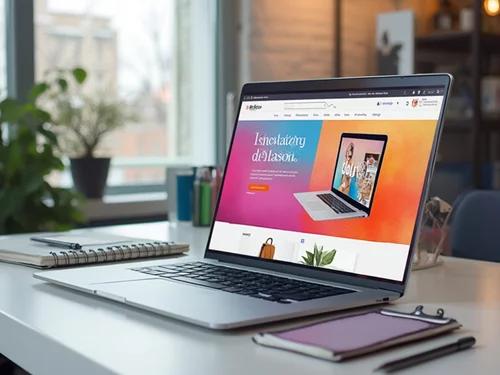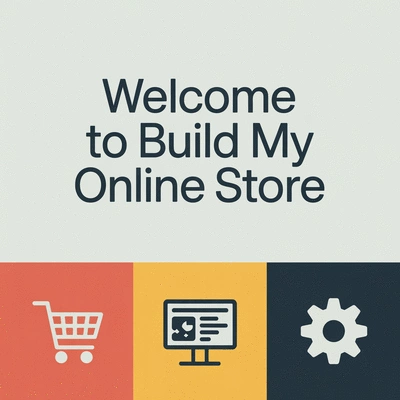In the fast-paced world of e-commerce, adapting to design trends is not just beneficial—it's essential. As we look toward 2025, understanding what captures customers' attention can dramatically influence your online store's success. Are you ready to elevate your e-commerce strategy?
What You Will Learn
- The significance of front-end design in creating positive first impressions and enhancing user engagement.
- How current design trends can drastically improve your conversion rates through visual appeal and trust signals.
- Key trends for 2025, including mobile-first design and the integration of micro-interactions to boost user experience.
- Practical steps to implement a user-centric design strategy, ensuring accessibility and ongoing feedback from customers.
Dominant E-Commerce Front-End Design Trends for 2025
The following visual highlights the key design trends shaping the e-commerce landscape in 2025, offering a quick overview of what to prioritize for an engaging and successful online store.
Mobile-First Design
Prioritizing mobile users for better accessibility and a seamless experience across all devices.
Micro-Interactions
Engaging users with subtle animations and feedback to enhance the overall user experience.
Advanced Frameworks
Leveraging new technologies for improved performance, speed, and enhanced interactivity.
Sustainability Approaches
Designing with eco-friendliness in mind, reducing digital footprint and promoting conscious consumption.
Understanding E-Commerce Design Trends for 2025
As we navigate through 2025, it's essential to stay ahead of the curve in e-commerce design trends. The online shopping landscape is ever-evolving, and understanding these trends can significantly impact your store’s success. From user experience to aesthetics, let's explore why staying updated is crucial for your business.
At Build My Online Store, we believe that a solid grasp of design trends not only enhances user experience but also contributes to higher conversion rates. By anticipating what customers expect and prefer, we can tailor our online stores accordingly. Now, let's dive into the details!
The Importance of Front-End Design in User Experience
The front-end design of your e-commerce site is the first interaction customers have with your brand. A well-crafted design offers a seamless experience that can keep users engaged and encourage them to explore further. Think about it: have you ever left a site because it was visually cluttered or hard to navigate? I know I have!
- First Impressions Matter: Users form opinions in seconds, and attractive designs keep them on your page.
- Intuitive Navigation: Clear pathways help users find what they need without frustration.
- Responsive Design: Ensures your site looks great on any device, enhancing accessibility.
By focusing on these crucial aspects of front-end design, we can create a more enjoyable shopping experience, ultimately leading to higher satisfaction and loyalty from our customers. For further insights into optimizing user experience, consider resources like the Nielsen Norman Group's reports on e-commerce user experience.
How Design Trends Influence Conversion Rates
Design trends play a vital role in shaping consumer behavior. If a site looks outdated or difficult to use, potential customers are likely to abandon their carts. In my experience, adapting to current design trends can transform your conversion rates dramatically!
- Visual Appeal: Attractive designs can entice users to stay longer.
- Trust Signals: Professional design fosters credibility and trust.
- Call-to-Action Placement: Effective use of design elements can improve click-through rates.
It's clear that staying on top of design trends isn’t just about aesthetics; it’s a strategic approach to boosting your e-commerce store's effectiveness. As we continue, we’ll delve into specific design trends that can enhance your store in 2025.
Key E-Commerce Front-End Design Trends in 2025
With the rapid evolution of technology and user preferences, several key trends are set to dominate e-commerce design in 2025. Understanding these trends will help you stay relevant and competitive in the online marketplace. You can find more comprehensive details in various industry reports, including FedEx's 2025 E-commerce Trends Report and DHL's 2025 E-commerce Trends Report.
- Mobile-First Design: Prioritizing mobile users for better accessibility.
- Micro-Interactions: Engaging users with subtle animations.
- Advanced Frameworks: Leveraging new technologies for improved performance.
- Experimental Navigation: Creating unique user journeys.
- Sustainability Approaches: Designing with eco-friendliness in mind.
In the upcoming sections, we’ll explore these trends in detail, providing insights and practical advice to implement them successfully in your online store.
Interactive Poll: What Design Trend Excites You the Most?
As we delve into the e-commerce design trends for 2025, we're curious about your thoughts! Which design trend do you believe will have the most significant impact on online shopping experiences?
Frequently Asked Questions About E-Commerce Design Trends
Q1: Why is front-end design important for e-commerce?
A1: Front-end design is crucial because it's the first interaction customers have with your brand. A well-crafted design creates positive first impressions, enhances user engagement, and helps users navigate your site intuitively, leading to higher satisfaction and loyalty.
Q2: How do design trends impact conversion rates?
A2: Design trends significantly influence conversion rates by improving visual appeal, fostering credibility through professional design (trust signals), and optimizing the placement of calls-to-action. Staying updated ensures your site remains attractive and easy to use, encouraging purchases.
Q3: What are the key e-commerce front-end design trends for 2025?
A3: Key trends for 2025 include Mobile-First Design (prioritizing mobile users), Micro-Interactions (subtle animations for engagement), Advanced Frameworks (leveraging new technologies for performance), Experimental Navigation (unique user journeys), and Sustainability Approaches (eco-friendly design).
Q4: What is Mobile-First Design and why is it important?
A4: Mobile-First Design involves designing your website primarily for mobile devices before adapting it for larger screens. It's important because a significant portion of online shopping occurs on mobile, ensuring better accessibility and a seamless experience across all devices.
Q5: How can I implement a user-centric design strategy?
A5: To implement a user-centric design strategy, gather regular feedback from users (e.g., through surveys), incorporate user personas into your design process, prioritize accessibility, and engage with your community to understand their needs and preferences.
Summarizing the Future of E-Commerce Design
As we look towards the future of e-commerce design, it’s clear that the landscape is evolving rapidly. With advancements in technology and changing consumer expectations, staying ahead of the curve is essential for success. Here are some trends that I believe will shape the next wave of e-commerce front-end design:
- Increased focus on mobile-first design to enhance accessibility
- Integration of AI for personalized shopping experiences
- Use of micro-interactions to engage users effectively
- Adoption of sustainable design practices
At Build My Online Store, I understand how vital it is for Australian businesses to adapt to these changes. By embracing these trends, you can create an engaging and user-friendly online shopping experience that meets your customers' needs.
Looking Ahead: The Next Steps for E-Commerce Front-End Design
In the coming years, prioritizing user experience will be more critical than ever. As we implement these design trends, consider the following steps to enhance your e-commerce strategy:
- Conduct regular user testing to gather feedback on design changes
- Utilize analytics tools to track user behavior and preferences
- Stay updated on emerging technologies that could improve your store
- Foster a culture of continuous improvement within your design team
By taking these proactive measures, your online store can adapt effectively to changing market demands. Remember, it’s all about creating a seamless experience that resonates with your audience!
Encouraging a User-Centric Approach in Design Strategies
As we embrace these new design strategies, it's crucial to keep the user at the center of our efforts. A user-centric approach not only enhances customer satisfaction but also increases conversion rates. Here are some ways to encourage this mindset:
- Gather feedback from your users regularly through surveys
- Incorporate user personas in your design process
- Prioritize accessibility to ensure everyone can use your site
- Engage with your community to understand their needs and preferences
At Build My Online Store, I strive to provide practical guidance that helps you implement these user-focused strategies. By prioritizing the needs and preferences of your customers, you will build a loyal base that resonates with your brand!
Join the Conversation: Share Your Insights and Experiences
How Will You Implement These Trends in Your E-Commerce Strategy?
I'm interested to hear how you plan to incorporate these design trends into your e-commerce strategy! Whether you’re just starting or looking to revamp your existing store, sharing your plans can foster community learning and support. Why not start a conversation in the comments below or connect with me through social media?
Inviting Feedback on Design Practices and User Experience Improvements
Your experiences matter! I invite you to share your thoughts on the design practices that have worked for you, as well as any challenges you've faced. Understanding what resonates with you will enhance the insights we offer at Build My Online Store, allowing us to tailor our content even further to meet your needs.
Let’s collaborate to create a future where e-commerce design is not only functional but also enjoyable and engaging!
Recap of Key Points
Here is a quick recap of the important points discussed in the article:
- Focus on User Experience: Prioritize intuitive navigation and responsive design to enhance customer interactions.
- Adapt to Design Trends: Stay updated with current trends like mobile-first design and micro-interactions to improve conversion rates.
- Utilize Trust Signals: Incorporate professional design elements that foster credibility and encourage user trust.
- Conduct Regular Testing: Gather user feedback to continuously improve design and functionality.
- Embrace Sustainability: Consider eco-friendly design practices to resonate with socially conscious consumers.









